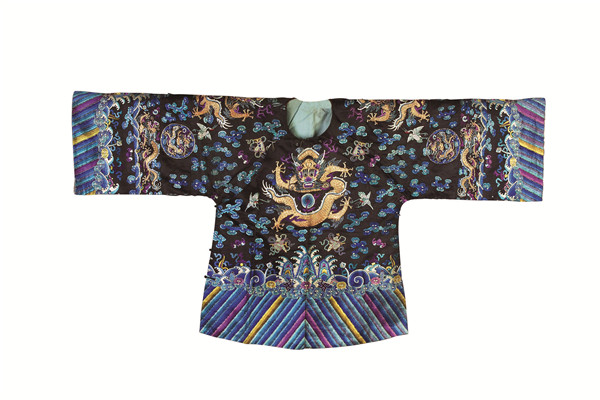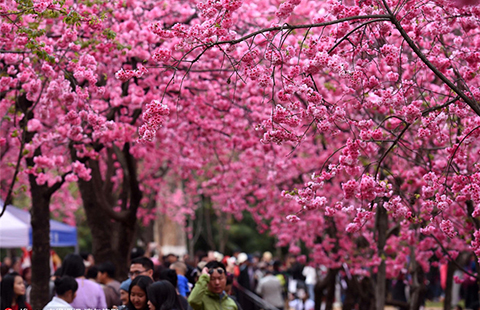Old is gold
Updated: 2016-08-16 07:35
By Wang Kaihao(China Daily)
|
||||||||
 |
|
[Photo provided to China Daily] |
Some exhibits are from cultural relics that are permanently housed at the Capital Museum. A cloisonne tripod that was used to burn incense sticks during Qing Dynasty (1644-1911) Emperor Qianlong's era, a gold hairpin studded with rubies from the Ming Dynasty (1368-1644) and a bird-pattern lacquer plate from the Yuan Dynasty (1271-1368) are among the displays.
Many exhibits show modern-day craftsmanship.
Hou Xue, a Beijing-based artisan who specializes in painted and inlaid lacquer, showed his skills at the exhibition. According to him, a small lacquer plate that needs a coating of gold foil usually takes a month to make.
"Most of the artisans earlier only served royal families and nobles. The items went to ordinary families after the Qing Dynasty fell," Hou says.
"In olden times, laquerware for emperors would be painted 18 times to create a cubic feeling on its surface. We may partially simplify the process today for the public-by, for instance, reducing some auxiliary ornamentation-but the gist of the skill remains."
Hou now helps with the restoration of royal furniture at the Palace Museum, also known as the Forbidden City. When a layer of paint dries, he still uses old ways to polish the surface-mixing bean oil and flour. But even when laquerware largely belonged to the upper class, it was found in daily-use articles, he says.
"When we revitalize traditional craftsmanship, we need to respect functionality rather than merely treating items as fine art pieces."
- Nepal's newly elected PM takes oath
- Texas gun law worries incoming students
- China vows to deepen economic, trade cooperation with ASEAN
- Fire guts Emirates jet after hard landing; 1 firefighter dies
- Egypt's Nobel-laureate scientist dies of illness in US
- THAAD muscle flexing unmasks anxiety over declining hegemony

 British dad turns breakfast into work of art
British dad turns breakfast into work of art
 China inches up Global Innovation Index 2016
China inches up Global Innovation Index 2016
 Female soldiers on Frigate Jingzhou
Female soldiers on Frigate Jingzhou
 Chinese synchronized swimming duo advances into final
Chinese synchronized swimming duo advances into final
 Beach dedicated to dogs opens in Croatia
Beach dedicated to dogs opens in Croatia
 Top 10 tech billionaires worldwide
Top 10 tech billionaires worldwide
 Castro, 90, offers thanks on birthday, slams Obama
Castro, 90, offers thanks on birthday, slams Obama
 Romantic ending for Olympic diving lovebirds
Romantic ending for Olympic diving lovebirds
Most Viewed
Editor's Picks

|

|

|

|

|

|
Today's Top News
Trump outlines anti-terror plan, proposing extreme vetting for immigrants
Phelps puts spotlight on cupping
US launches airstrikes against IS targets in Libya's Sirte
Ministry slams US-Korean THAAD deployment
Two police officers shot at protest in Dallas
Abe's blame game reveals his policies failing to get results
Ending wildlife trafficking must be policy priority in Asia
Effects of supply-side reform take time to be seen
US Weekly

|

|









